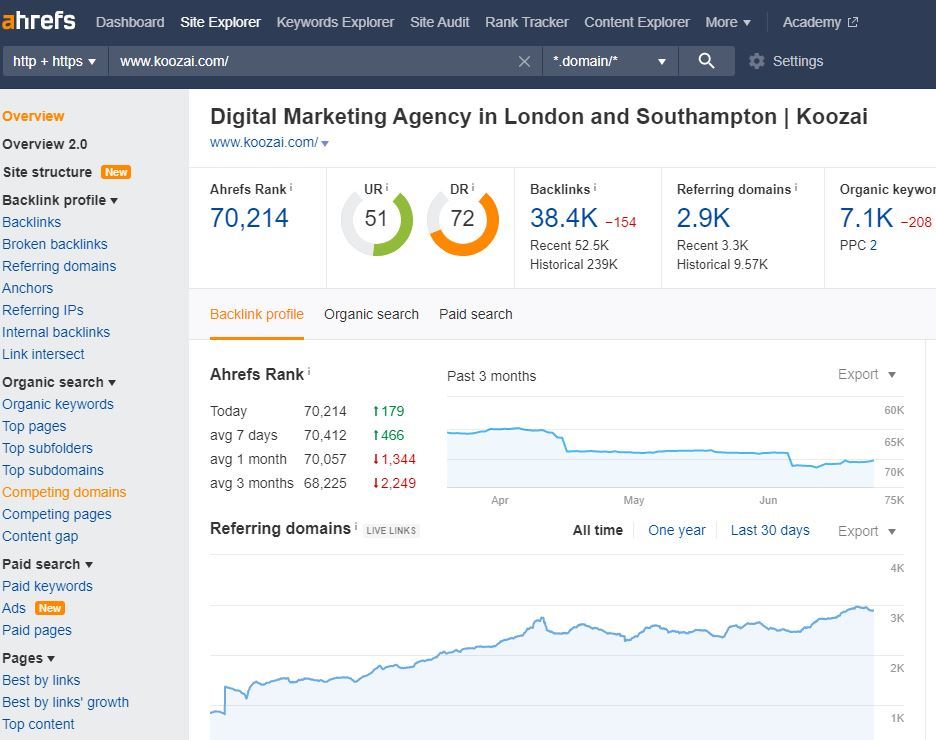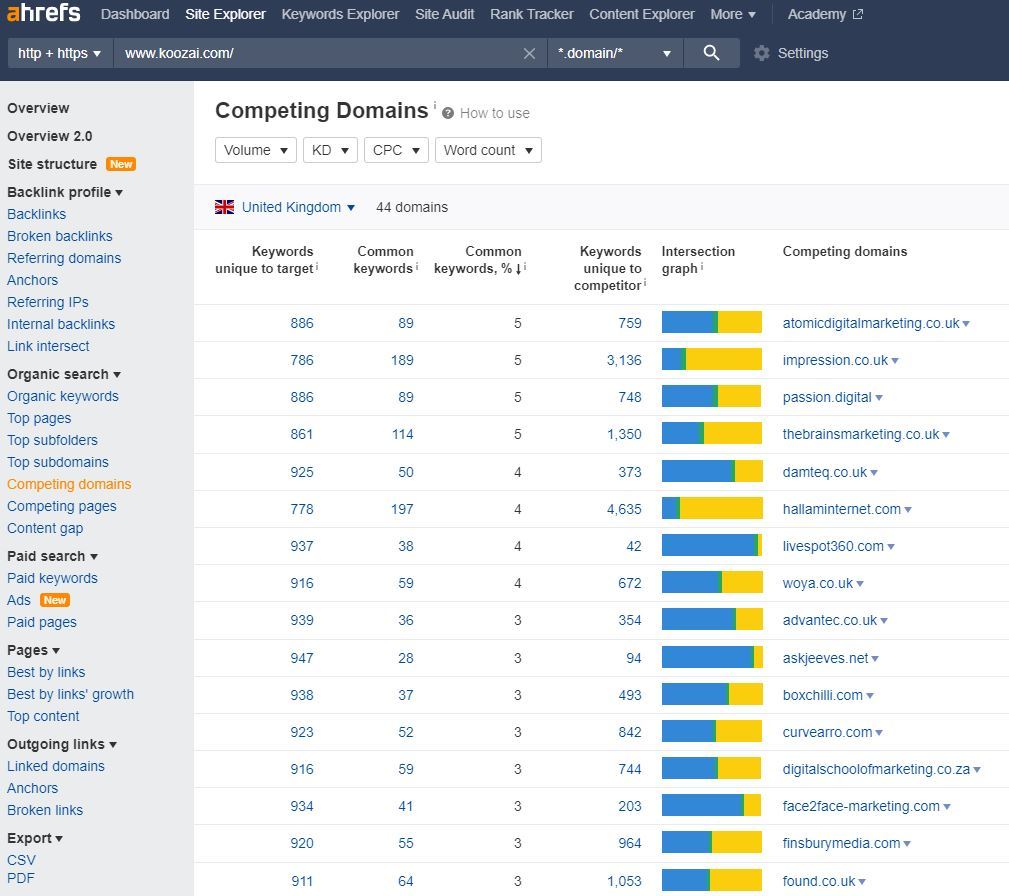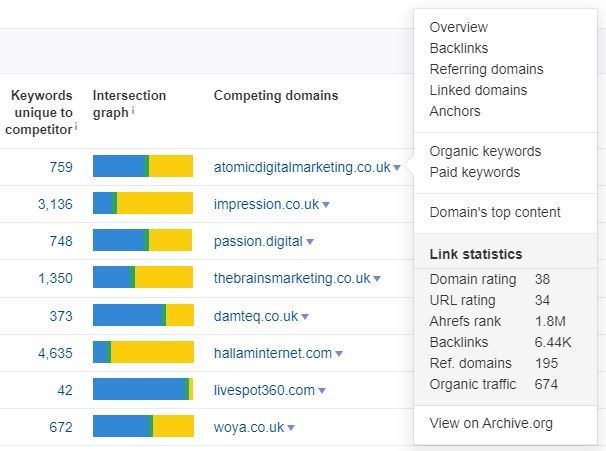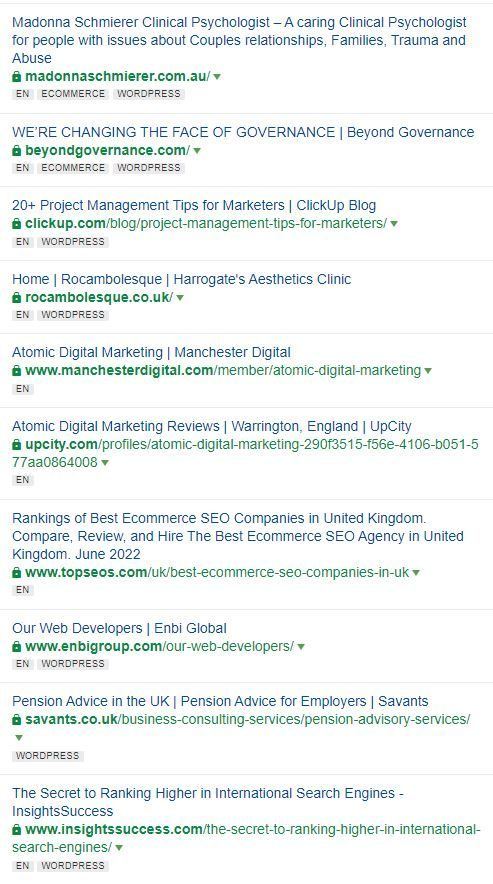Backlinks are the backbone of the internet, they allow for efficient crawling and indexing of websites but also play a critical role in the ranking process.
Essentially, the more high-quality, relevant links your website has, the higher the chances of your website ranking higher and generating more organic traffic, so it’s important that your site is regularly receiving new links.
This is easier said than done though, as link-building is becoming increasingly hard to execute so marketers must be more and more creative in their link-building efforts. However, this is where a competitor backlink analysis comes in, it uncovers a wealth of backlink opportunities to explore.
What’s A Competitor Backlink Analysis?
Backlink analysis is an excellent way to carve a strategy out for your backlink acquisition campaign. Without it, it can very much feel like you’re blindly navigating through an endless source of websites to approach. Simply taking the time to research your competitors makes it far easier to see which backlinks are the most relevant, have the highest organic traffic and carry the most authority.
A competitor backlink analysis is how it sounds really, we’ll be making use of third-party tools to identify the backlink profiles of your highest performing organic competitors.
So without further ado, let’s get stuck in…
Step 1: Open Your Backlink Analysis Tool Of Choice
When it comes to competitor analysis, there are several options available to choose from. Here at Koozai, we use a few tools to get the most balanced reflection of the data, as each tool can vary in its output.
Personally, I like to use Ahrefs for backlink analysis. It’s supposedly got the second most active crawler bot (after Google bot), which is pretty impressive. This means that it often discovers backlinks faster than that of SEMrush or other third-party tools. After all, you want the most up-to-date, fresh backlink opportunities showing as these websites are likely to be more responsive if they’ve just linked to your competitor.
For the purposes of this blog post, we’ll use Ahrefs to analyse our competitor backlink profiles.
Step 2: Identify Organic Competitors In Your Niche
Within Ahrefs, you’ll need to enter your own domain into the ‘Site Explorer’ feature, you should begin to see your stats populating within the dashboard.
Then, in the left-hand sidebar, you’ll see a ‘Competing Domains’ link underneath the ‘Organic Search’ section:

Once selected, you should see a dashboard similar to the below:

Whilst you may already have some competitors in mind, these are your true organic competitors. In other words, these are the websites which have the highest percentage of shared keywords with your site.
Now, this doesn’t always mean they will be a direct competitor. There may be some domains which are too niche-specific or too broad to be considered a direct competitor. Just use your best judgement to look through each of the domains and decide which ones are the most relevant.
You should also take some time to click the arrow dropdown next to any domains that look favourable. The dropdown will display the number of referring domains, the domain rating and the organic traffic for the selected website.
We want to look at competitors who are generating high amounts of organic traffic, with a high amount of referring domains as they’ll have the most backlink opportunities for us.
Step 3: Investigate Competing Backlink Profiles
Now that we’ve identified the top organic competitors in your niche, we’ll need to dig a little further. Simply click the ‘Backlinks’ option and you’ll be brought to a page which displays all of the backlinks for this domain.

For better results, ensure the ‘One Link Per Domain’ option is selected at the top left-hand side of the dashboard. This way, we can quickly see a full list of domains that link to this competitor, with the specifics of each link on the right-hand side such as the anchor text used and the date discovered.
TOP TIP: Filter by ‘Recent’ to find the freshest backlinks that your competitor has built. If a website has very recently linked to a competitor, it’s much more likely that they’ll be responsive and open to a backlink opportunity with your own site!
Backlink Types
So, what are we looking for as we navigate through the list of backlinks? What constitutes a ‘good’ backlink opportunity?
Well, as you make your way down the list you’ll usually be able to segregate the links into one of these categories:
- Directory Links
- Citation Links
- Footer Links
- Sponsored Links
- Digital Press Release Links
- Guest Post Links
- Low-Quality/Spammy Links
The best links that we’re looking for will generally consist of authoritative and relevant directory links, guest post links and digital press release links.
Example Backlink Profile
In our example, let’s see what opportunities there are for a competitor of Koozai. These are some of their top backlinks:
There are a few link types here, although the most common appears to be footer links. Since they’re a web design company they’ve included a backlink on each website that they’ve built, back to their own site. This is a pretty old link-building tactic and the general consensus now is that these links should be nofollowed in order to avoid a manual Google penalty.
We also see a directory link from ‘Top Seos’, which will likely be a free listing. Although, some directory sites charge a fee to be featured in their ‘Best [Industry] companies in [City]’ pages. Still, this is a missed opportunity that can be easily replicated for our own site.
Finally, we also see a guest post on ‘Insight Success’ where they’ve included a backlink to their international SEO services page, with the anchor text ‘International SEO Agency’. This is a very good quality link, as it’s coming from a relevant site, on a relevant page, linking to a relevant target page, with hyper-relevant anchor text.
It’s important to remember that this technique can be overdone though, if all of your backlinks are using exact-match anchor text then it’s likely that Google will catch onto this at some point. You want a healthy mix of naked, branded, exact match and partial match keywords for your sitewide and page-level anchor texts.
Export Competitor Backlinks
Within Ahrefs, you’re able to export the list of backlinks of each competitor. Then, you’ll be able to work through the full list and highlight any backlinks or domains which you think your own site should earn a link from too.
Ideally, you’ll have a mix of directory links, guest post links and digital press release links to investigate. Directory sites generally have an application page, where you simply need to enter a few business details and the link will be published live. However, for guest post links and digital PR links you’ll need to conduct some outreach in order to earn any backlinks.
Step 4: Create An Outreach List (Optional)
It’ll be important to have a larger list that is necessary, as the response rate for backlink outreach is particularly low. For a list of 200 sites, you can expect to land anywhere between 5-20 links. However, this is totally dependent on the angle, personalisation and perceived experience that comes across in your outreach.
Simply blasting all 200 sites with the same templated message will lead to a low response rate. Whereas, adding a personalised touch, finding the most relevant contact in each business and pitching an excellent win-win opportunity where both parties feel they’ll benefit from the link will be the most successful campaigns. For more information why not check out our guide to the 7 best digital PR tools to earn backlinks.
The outreach email will vary depending on each target website and the reason why they should link to your site. For example, if they’ve linked to a resource or guide of your competitor, but you’ve got a more up-to-date version that would be more valuable to their readers let them know!
For links on higher authority press websites, it’s going to be harder to replicate those links. It’ll be important to ensure you’ve got a proper Digital PR campaign in place which will capture the attention of journalists in your industry-related and national press websites.
We find that Digital PR is one of the areas that businesses struggle the most with, which is why we offer digital PR services to our clients. We’ve earned some fantastic links across regional and national press publications so we know a thing or two about building links. Contact us for more information.

